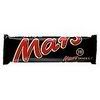|
Before i start, i'd like to just point out that how this game works is that you have a pool of points predetermined by both players, and every model you want to use in your army costs a certain amount of points. There are 2 types of models in this game, heroes and warriors. You must have a hero for every 12 warriors in your army, and then section these 13 models (or less) into a 'warband'. Any good army can ally to any other good army, and any evil army may ally to any other evil army.
Here is a brief, simple, breakdown of each army/sect of the game:
Evil Armies: Will almost always outnumber good, and maybe even outnumber them with better troops. This is because the evil profiles are generally quite vanilla, they do what yo want them to do, and you pay the bare minimum in points for them as a result. I.E: Compare a feral uruk hai to a dwarf khazad guard, they are both 'shock troops', and share many identical stats, however the khazad guard has a special rule that affects his courage statistic (a non combat related statistic), but the feral uruk hai does not, and has 1 more attack (essentially meaning it rolls twice as many dice in combat - something very important), and the feral only costs 1 point more despite having such a huge advantage in terms of it's combat prowess.
Evil armies have a wide variety of heroes that can fill out almost any roll whether it be nullification, combat, and, (almost exclusively to evil), have a nice selection of heroes that can boost the combat efficiency of nearby troops, and reduce enemy models fighting prowess.
Good armies: I have found that good models generally pay a little extra for a subtle special rule that may or may not come in handy - such as the khazad guards 'bodyguard' rule. And these rules generally give the model survive-ability in the later parts of the game. For example: every elf model has the 'woodland creature' rule, which basically means that they can walk through forests and wooded ares without penalty. This rule is likely incorporated into the models points cost, despite not making them a more formidable combatant, but can be a game breaker if you find yourself needing to get certain models to certain objectives. Your elf can rush through the woods with ease, while the enemy is stuck moving through them at half speed.
Because of good models paying for these 'subtleties' in their points cost, it is important you do play the one of the 6 'standard' scenarios in the rulebooks, with terrain, as opposed to just throwing two armies at each other with no objective, and no scenery to maneuver your models. Good generally suffers greatly if the aim is simply to decimate one another into oblivion. Another big drawback is that no good army (besides elves) has heroes that can do any sort of magic, which is a rather integral part of the game, meaning you are forced to ally in a wizard (none of whom can lead troops) to eat up your points if you want to use magic.
|
 Top
Top Top
Top Top
Top Top
Top Top
Top Top
Top Top
Top Top
Top









